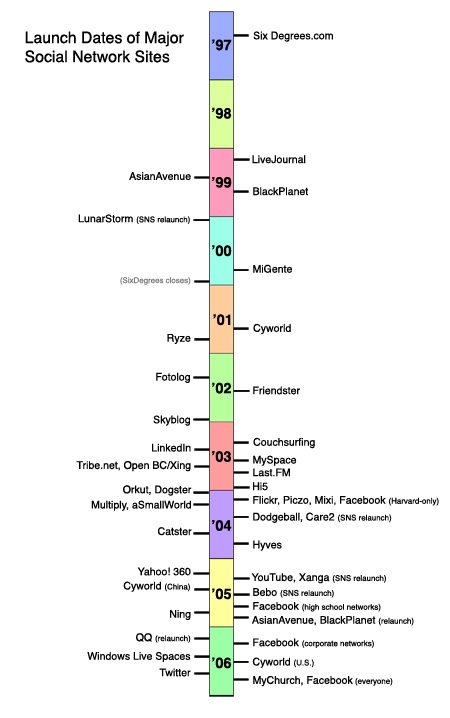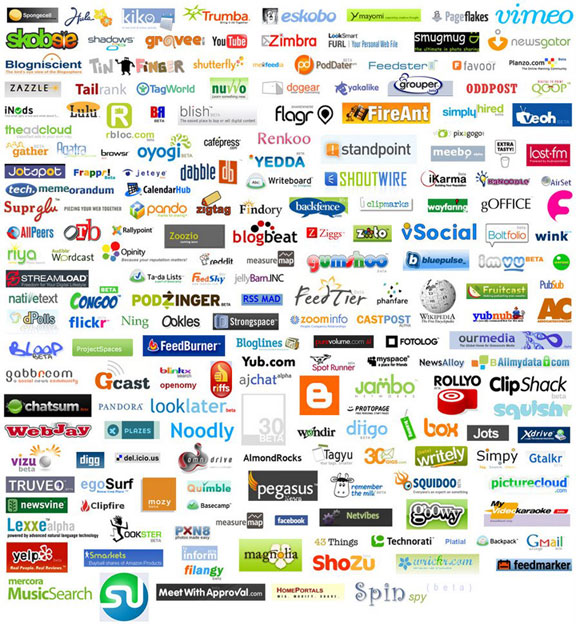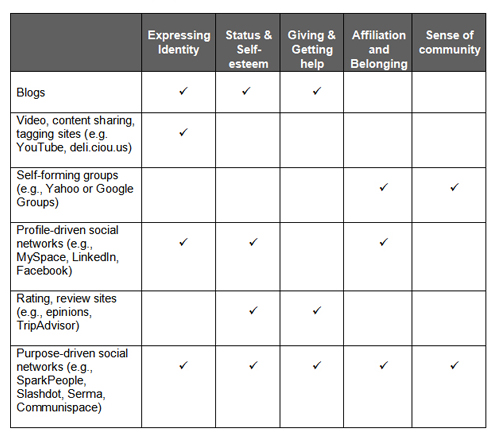



|
"Social media also reminds me a bit of the old telephone party lines. Several families in a particular area all shared a single phone line. It was easy to pass along information - intentionally or not - to one another." Source
| |
“Facebook helps you connect and share with the people in your life.” – Facebook’s slogan "Scholars who study the history of communications technologies or media include historians of technology and of literacy, sociologists, economists, political scientists, anthropologists and technologists such as computer scientists. A central controversy concerns how far technology does or does not condition social change." (Chandler) | |
| Definition of Social Media | |
|
In a Nutshell: Social media uses web-based technologies to transform and broadcast media monologues into social media dialogues. Social media is media designed to be disseminated through social interaction, using highly accessible and scalable publishing techniques. It supports the democratization of knowledge and information and transforms people from content consumers to content producers. Social media has become appealing to big and small businesses. As social media continues to grow, the ability to reach more consumers globally has also increased. Twitter, for example has expanded its global reach. Social media has become the new "tool" for effective business marketing and sales. Popular networking sites including Myspace, Facebook and Twitter are social mediums most commonly used for socialization and connecting friends, relatives, and employees. Social media can be said to have three components: 1.
Concept (art, information, or meme). | |
| History of Social Media | |
| Social media didn’t start with computers, it was born on “line” – on the phone. Phone phreaking, or the rogue exploration of the telephone network, started to gain momentum in the 1950’s. Early social media explorers built “boxes“… homemade electronic devices that could generate tones allowing them to make free calls and get access to the experimental back end of the telephone system. Phreaks sniffed out telephone company test lines and conference circuits in order to host virtual seminars and discussions. The first social networking website was SixDegrees which let people make profiles and connect with friends in 1997. This kind of interactive, social web application style became popularly known as “Web 2.0” and it really gained momentum with Friendster around 2002-3.. followed by MySpace (2004 – 2006) and then Facebook (2007 -> ). Source
| |
| Examples of Social Media | |
| |
| The Benefits of Social Media (Facebook use) | |
| |
| The Negatives | |
"All technologies indeed are best described, in their capacity for good or bad, as knives. A knife can be used to cut food, which is good, and to stab an innocent person, which is bad. The determining factor in whether the knife - or whatever the technology - is used for good or bad turns out not to be the technology but the human being or group of humans using the technology." (Levinson, Chapter 11: The Dark Side of New Media)
| |
| Getting Set Up With Social Media [For this example, Facebook] | |
| More Resources | |
Sarah
McNabb - CMNS 545: Communication & Technology - 2010 |








